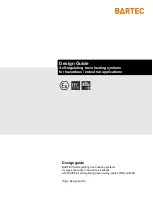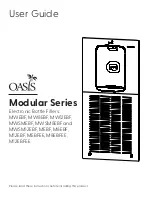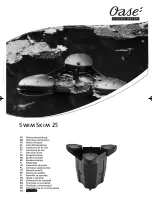
Xb
X-Array™ Bass System
• Unprecedented acoustic output in
a small, lightweight package
• Ring-Mode Decoupling (RMD)™
provides accurate transient detail
• EVX-180B woofers
• Unique rear-hinge rigging
• Enclosure shell and rigging
identical to all of the full-size
X-Array™ systems
Description
The X-Array
™
product line represents im-
portant advancements in concert-sound rein-
forcement technology. The design goals
called for the highest acoustic output capa-
bility with the highest fidelity in lightweight,
compact enclosures that were easy to array.
The development began with a clean sheet
of paper and took an integrated approach.
The individual loudspeaker drivers, horns,
enclosures, rigging hardware and system
configurations were designed from the
ground up specifically for this high-perfor-
mance application.
The Xb is a manifolded, vented-box bass
system utilizing two 457-mm (18-in.) woof-
ers. The two woofers face each other in a
manifold chamber at the center of the en-
closure. This manifolding technique (U.S.
Patent Number 4,733,749) increases the
acoustic loading, resulting in increased low-
frequency efficiency (at and slightly above
box tuning) and reduced distortion compared
to conventional direct-radiating designs. The
woofers were designed as part of the Xb
development and represent a step forward
in state-of-the-art loudspeaker design in
terms of high acoustic output with low
distortion and low power compression.
Electro-Voice engineers developed a new
technology dubbed Ring-Mode Decoupling
(RMD
™
) to substantially improve clarity and
intelligibility by reducing both linear and
nonlinear resonance modes that color the
sound.
The low-frequency driver in the Xb is the
EVX-180B. An improved version of the in-
dustry-standard EVX-180A high-excursion
467-mm (18-in.) woofer that has distin-
guished itself as an industry standard for
high-power, low-frequency reproduction.
During the X-Array
™
development, the ther-
mal conduction of the motor was improved
and the suspension was redesigned, giving
the EVX-180B even lower power compres-
sion and a longer mechanical lifetime. In the
Xb, the woofers are manifolded in a vented
enclosure optimized for maximized output
from 37-160 Hz with minimized distortion.
Ring-Mode Decoupling, (RMD
™
), is a tech-
nique utilized and named by Electro-Voice
to describe a process used to improve sound
quality in loudspeaker systems. RMD offers
a solution to a very fundamental problem. It
has long been recognized that two different
loudspeaker systems can sound different
even though they both may be equalized to
have the same frequency response. This dif-
ference is due to a variety of resonances, or
ring modes that color the sound. Although
this ringing may be very low in level com-
pared to the program material, it is still au-
dible. The source of these resonances may
be mechanical or acoustical in nature, or a
combination of both. In addition, they may
be linear or nonlinear, resulting in their char-
acter changing with level. Furthermore, these
ring-modes may be aggravated when mul-
tiple loudspeaker enclosures are assembled
into arrays. The result is a coloration that de-
creases intelligibility and clarity, with the
nature of that coloration varying with level.
Often, the listener perceives that coloration
as imbalance in the frequency response, and
will attempt to electronically adjust the sys-
tem to restore the spectral balance. However
this electronic equalization has the negative
effect of changing the program material
itself.
Ring-Mode Decoupling (RMD
™
) addresses
mechanical resonances with mechanical
solutions, and acoustical resonances with
acoustical solutions. In the Xb development,
RMD was applied at every level – to the in-
dividual LF drivers, the LF enclosure cham-
bers and the interaction between multiple en-
closures. The design process included, for
example, the driver cone, suspension geom-
etry and materials, enclosure geometry and
materials, absorptive materials, etc. The re-
sult is a dramatic improvement in clarity and
with a much more neutral sound (a lack of
coloration) with the loudspeaker system
maintaining its sonic integrity from the very-
lowest sound pressure levels to the very-


























